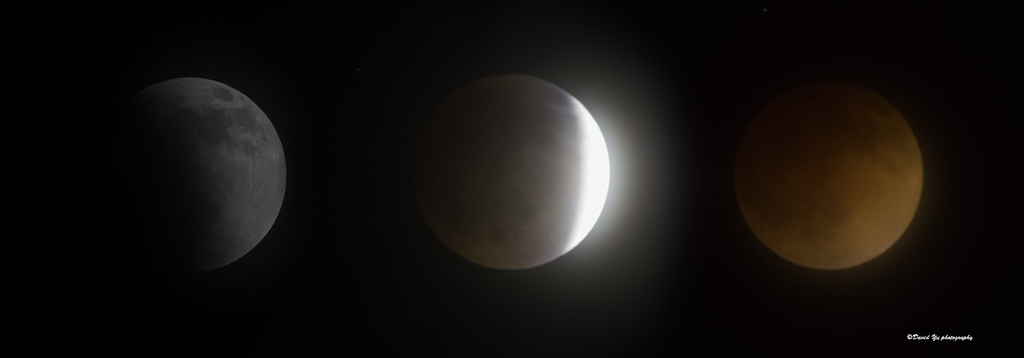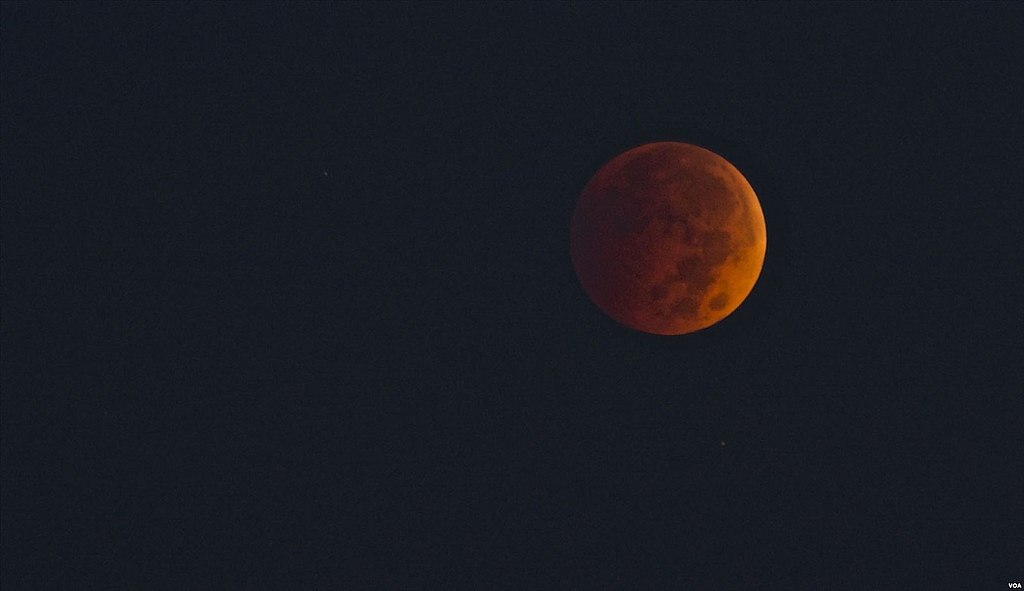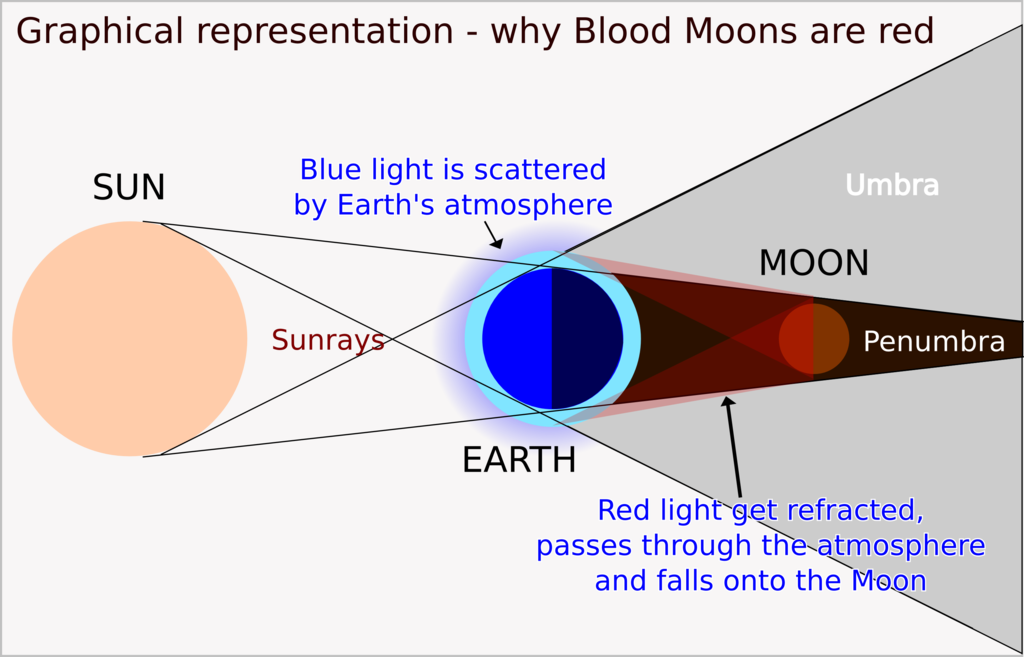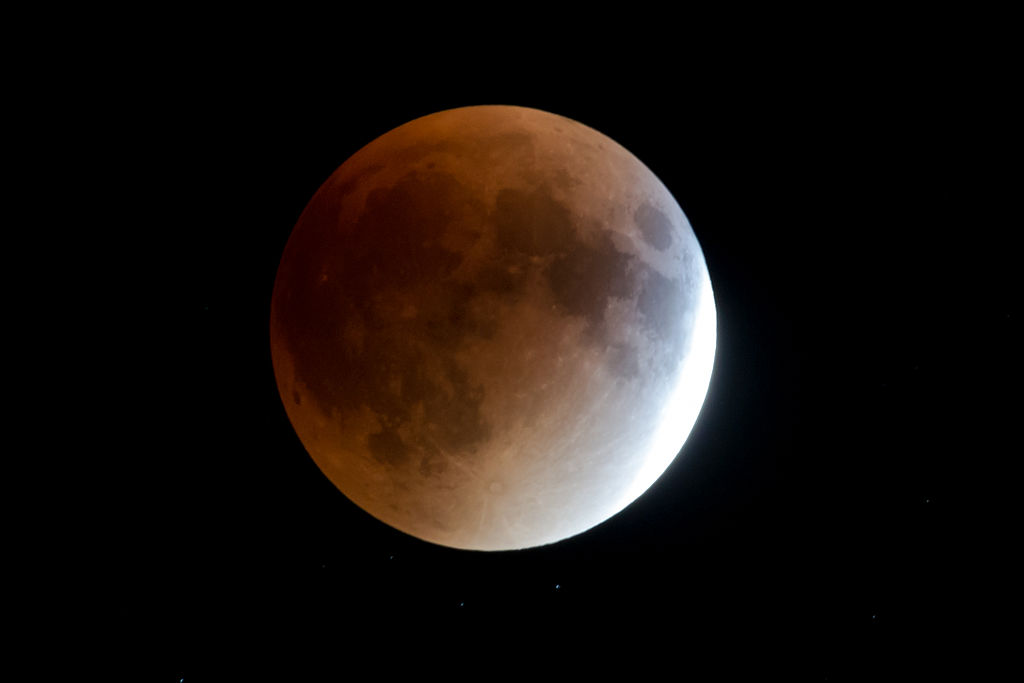On July 27, most of the world will have a chance to see the longest total eclipse of the moon for the next 100 years. The eclipse will not be visible in North America, but the rest of the world should have a good view if the skies are clear.
An eclipse of the moon happens when the Earth passes between the sun and the moon. When that happens, the Earth throws a shadow across the moon as it blocks the sun’s light. This is called a “lunar eclipse”.

(Source: David Yu, Flickr.com.)
Because of the position of the moon, this eclipse will last about an hour and 43 minutes. That’s a long time. There won’t be a longer eclipse until 2123 – more than 100 years from now.
Friday’s total eclipse will not only be a long one, but it will also color the moon red. This is called a “Blood Moon”. The reason the moon turns red is because of the way light bends around the Earth.

This picture of a Blood Moon was taken during a lunar eclipse in 2014.
(Source: Dimitris Manis/VOA, via Wikimedia Commons.)
The Earth has a layer of gases around it called the “atmosphere”. We don’t usually think about it too much, but it’s very important. The atmosphere is like the Earth’s invisible blanket. It protects us from being hurt by the sun. And at night, it holds in the heat.
The Earth’s atmosphere can change the way light looks when it passes through it. It can color light and it can bend it. The atmosphere is not clear. It is colored by things such as pollution, dust, smoke from fires, and ash from volcanoes.
If you’ve ever seen an amazing sunset, then you’ve seen how the atmosphere can color the light. If the sun looked big during the sunset, it was because the atmosphere was bending and magnifying the light.

which can bend and color the sun’s light.
(Source: Sanu N [CC BY-SA 4.0 ], from Wikimedia Commons
So when the Earth blocks the sun’s light during a total eclipse, some of that light passes through the Earth’s atmosphere. When it does, the light gets colored. It also gets bent, or “refracted” so that it shines on the moon. That is why the moon can look red during a Blood Moon, even though the Earth is blocking the sun.
People in Europe, Africa, Asia, Australia, and South America should have plenty of time to see the eclipse. There is no danger from watching a lunar eclipse, and nothing special is needed. But in North America, it will be daylight during the eclipse, which will make it impossible to see.

Next January, there will be an eclipse that will be visible in North and South America.
(Source: Eric Kilby (Blood Moon – Last Wedge of Light), via Wikimedia Commons.)
The website TimeAndDate.com has a special page that can help you find the time of the eclipse in your area. The site will also have a live video of the eclipse, if you can’t see it where you live. The Space.com website also lists sites for watching the eclipse on the Internet.
If you are in North America, don’t feel too bad if you miss the eclipse. The next full eclipse of the moon will happen on January 21, 2019. That eclipse will be mainly visible in North and South America.
The planet Mars is also putting on a show this week. It is nearer to Earth now than it has been in 15 years, which means that it will look brighter than it has in 15 years. Mars will be brightest on July 31.
